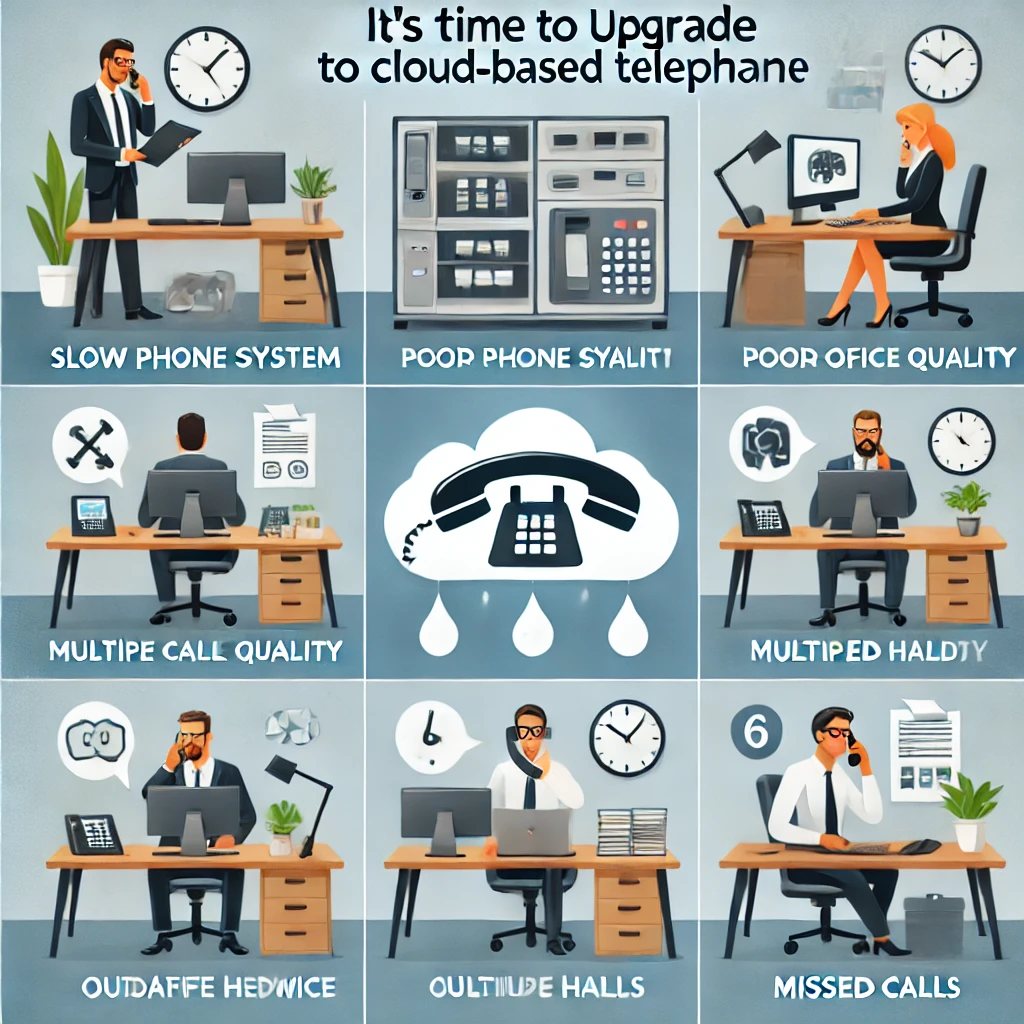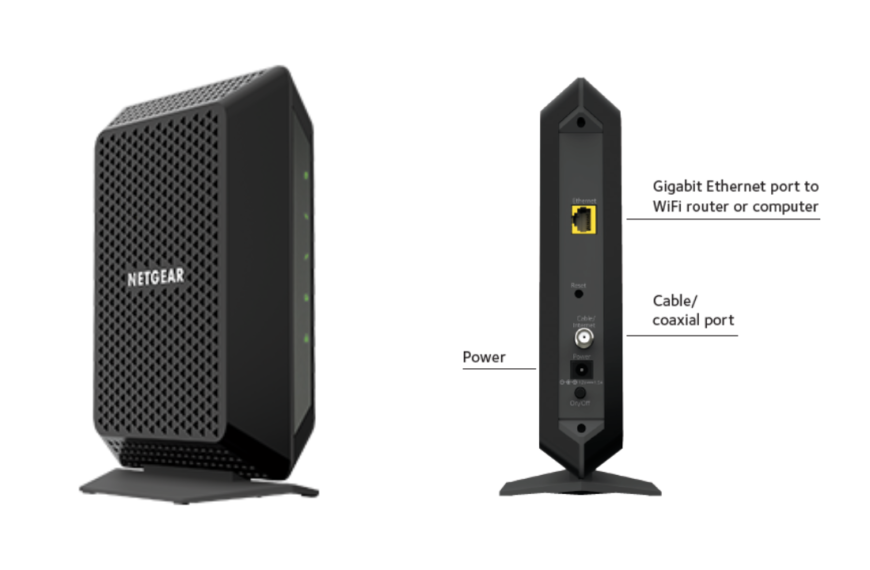In today’s rapidly evolving business landscape, cloud-based telephony, also known as Voice over Internet Protocol (VoIP), is quickly becoming the go-to solution for companies of all sizes. Unlike traditional phone systems, which rely on physical landlines and complex infrastructure, VoIP uses the internet to transmit voice data, offering businesses greater flexibility, scalability, and cost savings. The growing popularity of cloud-based telephony is a testament to its numerous advantages, such as seamless communication, reduced operational costs, and enhanced remote working capabilities.
Recognizing when it’s time to make the switch to VoIP is crucial for any business aiming to stay competitive and efficient in this digital age. Many organizations hold onto outdated phone systems due to familiarity or initial investment, but as business needs change, these systems can become inefficient and costly. In this article, we’ll explore six key signs that indicate it’s time to upgrade to cloud-based telephony. By identifying these signs early, you can ensure your communication systems evolve with your business, improving both productivity and customer experience.
Sign 1: More Employees Are Working Remotely
The shift to remote and hybrid work models has become one of the most significant changes in the modern workplace, especially since the global pandemic. Many businesses have embraced the flexibility of allowing employees to work from home, and in many cases, remote or hybrid work has become a permanent fixture of organizational structures. This change has introduced a new set of challenges in maintaining effective communication, especially when employees are spread out across different locations.
Traditional phone systems, typically confined to physical office spaces, are no longer suited to the demands of a dispersed workforce. Employees who work from home or while traveling often face difficulties staying connected through outdated systems that lack the flexibility to accommodate remote work. This is where VoIP technology shines.
VoIP allows businesses to maintain seamless communication regardless of the location of the employee. As long as you have an internet connection, your VoIP system can work anywhere in the world. Whether you’re in the office, at home, or on the go, VoIP ensures that phone calls are routed as if they originated from the office. This level of flexibility is crucial for businesses looking to provide continuous communication and collaboration, regardless of where their teams are working from.
VoIP systems often integrate with other communication tools, such as video conferencing and instant messaging, making it easier for remote teams to stay in touch and work together efficiently. With features like call forwarding, voicemail-to-email, and virtual receptionists, VoIP ensures that your team can stay connected with clients and colleagues without missing a beat, no matter where they are.
Sign 2: Communication Protocols Are Inefficient
In many businesses, communication relies on a patchwork of systems landlines, mobile phones, email, instant messaging, and more. Each of these methods operates independently, often across different devices and platforms, leading to inefficiencies in the way teams collaborate. Employees must juggle multiple applications to keep up with different channels, frequently searching through emails for important messages, switching between devices to make calls, or struggling with missed messages in various systems. This fragmented approach to communication can slow down workflows, lead to miscommunications, and ultimately hinder overall productivity.
The complexity of managing these various communication systems only intensifies as businesses scale. It becomes increasingly difficult to track communications and ensure that messages or calls don’t slip through the cracks, resulting in lost opportunities or poor customer service. The need for a more cohesive, efficient approach to communication is more pressing than ever.
This is where unified communications (UC) tools, a feature that is often integrated with VoIP systems, can make a significant difference. UC tools combine voice, video, messaging, email, and collaboration features into a single platform, streamlining communication and making it easier for employees to access the tools they need. With UC, you no longer have to hop between different devices and applications—everything is centralized in one user-friendly interface.
A VoIP-based UC system can allow your employees to make and receive calls, access voicemail, send instant messages, and hold video conferences all through a single device, whether it’s a smartphone, tablet, or computer. This integrated approach eliminates the inefficiencies of managing multiple communication channels and ensures that your team is always on the same page. Additionally, UC systems can often be accessed remotely, which is ideal for businesses with remote or hybrid workers. By consolidating communications into one solution, businesses can significantly boost efficiency, reduce the chances of communication breakdowns, and improve overall productivity.
Sign 3: Phone Systems Are Prone to Outages
Traditional phone systems, especially those relying on landlines and on-premise infrastructure, are highly vulnerable to outages caused by a variety of factors. Whether it’s a natural disaster, such as a storm, flood, or earthquake, or technical failures like power outages or network disruptions, these systems often fail to function when you need them most. For businesses, this presents a significant risk communication breakdowns can lead to lost revenue, delayed projects, and frustrated customers. Additionally, because traditional phone systems are tied to physical locations, an outage in one area can affect the entire office or region, leaving teams unable to connect with clients, partners, or even one another.
These events have shown how easily power and communication infrastructure can be damaged or knocked out, crippling business operations for hours, days, or longer. For businesses relying on outdated phone systems, this can result in lost productivity, missed calls, and unfulfilled commitments, which can damage reputation and bottom-line profits.
VoIP, on the other hand, remains a resilient solution in such situations due to its cloud-based nature. Since VoIP systems operate over the internet rather than relying on physical landline connections, they are far less susceptible to outages caused by local infrastructure problems. Even in the event of a power outage or regional disruption, as long as the internet connection is functional, VoIP systems can continue to work seamlessly. VoIP calls can be made and received through a range of devices, including smartphones, computers, and tablets, providing businesses with continuous access to communication.
Moreover, if a VoIP system does experience a technical issue, the cloud-based architecture allows for remote troubleshooting and real-time fixes. Unlike traditional phone systems that require onsite visits from technicians for repairs, VoIP providers can resolve problems remotely, minimizing downtime and ensuring that your communication systems stay up and running. This cloud-based flexibility means that your business can continue operating efficiently, even in the face of disruptions, and stay connected with clients, customers, and employees, no matter the circumstances.
Sign 4: High Costs of Running Traditional Phone Systems
One of the most significant drawbacks of traditional phone systems is the high ongoing costs. From the upfront investment in hardware, such as phone handsets, wiring, and equipment, to the recurring charges for phone lines, maintenance, and technical support, traditional phone systems can quickly add up. Many businesses also face additional costs related to call minutes, especially for long-distance or international calls. These charges, combined with the need for specialized technicians to install, repair, or upgrade the systems, contribute to the overall expense of maintaining a traditional phone system. The more employees and phone lines your business has, the more these costs escalate.
For businesses with remote or hybrid teams, these costs become even more burdensome. Employees who work from different locations or travel frequently may rack up additional charges for international calls or long-distance communication. Moreover, the lack of scalability in traditional systems means that businesses often overpay for unused lines or struggle with expanding their infrastructure as they grow.
Switching to VoIP offers substantial financial benefits. Unlike traditional phone systems, VoIP operates over the internet, eliminating the need for expensive landlines and reducing the costs associated with call minutes. VoIP providers typically offer competitive pricing with flat-rate plans for domestic and international calls, significantly cutting costs for businesses that make frequent long-distance or overseas calls. On average, businesses save 30% to 50% on telephony costs after switching to VoIP.
Additionally, VoIP systems are far more scalable and cost-efficient. Since VoIP is hosted in the cloud, businesses can easily add or remove users as needed without the need for additional hardware or complex installations. This means that businesses only pay for what they use, without the overhead of unused lines or costly equipment upgrades. VoIP also reduces maintenance costs, as the cloud-based system is managed and updated by the service provider, eliminating the need for on-site maintenance or technical support.
The financial advantages of VoIP go beyond just call savings. The ability to integrate with unified communications tools, such as video conferencing and instant messaging, can streamline operations and reduce the need for separate communication services. With all communications flowing through one platform, businesses can save both time and money while improving overall efficiency. For any business looking to reduce costs while improving communication, making the switch to VoIP is a smart investment that can deliver significant savings in the long run.
Sign 5: Expansion or Downsizing Plans
As businesses grow or downsize, adapting communication systems can become a complex and time-consuming process with traditional phone systems. Whether you’re expanding into new locations, adding more employees, or consolidating operations due to downsizing, traditional phone systems often require significant manual adjustments. Installing new phone lines, updating extensions, and even relocating hardware can take days or weeks to complete. This process not only ties up resources but can also disrupt day-to-day operations, leading to potential communication breakdowns and delays.
For instance, if you’re opening a new office or increasing your team size, you’ll likely need to install new phones, set up additional lines, and update the phone system to accommodate the growing workforce. On the flip side, if you’re downsizing, you’ll need to remove or repurpose equipment, which can incur costs, waste time, and create confusion as the changes take place. These challenges make it difficult to keep your communications efficient during times of transition.
VoIP, however, offers a level of flexibility that traditional phone systems simply cannot match. Because VoIP is hosted in the cloud, it allows businesses to scale their communication infrastructure with ease, whether you’re expanding or reducing your team. Adding new users to a VoIP system is as simple as logging into the service provider’s online portal and assigning new extensions or devices. This can often be done in real-time without the need for physical hardware installation, saving both time and money.
Moreover, with VoIP, there’s no need to worry about the geographic location of your employees. Whether you’re adding a new team member in a different state or consolidating offices into a single location, the system can adapt seamlessly. Employees can work from anywhere, and their phone calls will still be routed through the same VoIP system, regardless of their physical location. This scalability ensures that businesses can remain agile during periods of growth or contraction without having to invest in additional infrastructure or face lengthy adjustments.
VoIP allows businesses to easily scale back without incurring the costs associated with dismantling or relocating traditional phone systems. You can simply remove or deactivate users from the platform, ensuring that you’re only paying for the services you need at any given time. This flexibility makes VoIP an ideal solution for businesses in transition, allowing them to adjust their communication systems quickly and efficiently without disrupting operations.
Sign 6: Poor Quality of Calls
In today’s fast-paced business world, communication quality directly impacts your professional image and customer experience. When customers call your business, they expect clear, uninterrupted communication, especially when discussing important matters. Poor-quality phone lines characterized by static, dropped calls, echoes, or delayed responses can lead to frustration, miscommunication, and a lack of trust. For businesses, this can significantly harm relationships with clients, result in lost opportunities, and diminish your reputation for professionalism. In fact, a call that cuts out or is hard to hear might be the difference between securing a deal and losing a client.
Traditional phone systems, especially those relying on analog lines or older technologies, are prone to these issues. Interference, physical wear and tear on equipment, and network congestion can all contribute to call quality problems. With such systems, there’s often little you can do to mitigate poor-quality calls without expensive repairs or equipment upgrades, and even then, the problem may persist.
VoIP, on the other hand, excels in delivering superior call quality. Since VoIP uses the internet to transmit voice data, it can broadcast voice calls in high definition (HD), providing a clearer, crisper sound compared to traditional phone lines. Advanced compression and error-correction technologies ensure that calls are less prone to interruptions, delays, or distortion. Whether you’re making a call to a client or having a meeting with remote employees, VoIP systems maintain consistent audio quality, even during peak usage times.
VoIP systems are less vulnerable to physical interference, which means clearer conversations with less background noise. This is especially valuable for businesses that rely on conference calls or virtual meetings, where quality audio is essential for effective collaboration. Many VoIP providers also offer features like noise cancellation and echo reduction, which help to improve overall sound quality even further.
By switching to VoIP, businesses can ensure a more professional and dependable communication experience, both internally and with clients. With HD voice quality and fewer disruptions, VoIP enhances your team’s ability to collaborate, communicate, and provide a top-tier customer service experience. This makes VoIP not just a solution to poor call quality but an upgrade that can improve the perception of your business in every phone conversation.
Read more: Jacksonville Computer Network Issue: Causes, Impact, and Solutions
Conclusion
Recognizing the signs that it’s time to upgrade to cloud-based telephony is essential for businesses that want to stay competitive and efficient in a rapidly changing communication landscape. If you’re facing challenges like remote work demands, inefficient communication protocols, frequent outages, high phone system costs, difficulty scaling, or poor call quality, then it’s time to consider the many advantages that VoIP offers.
Cloud-based telephony isn’t just a trend, it’s the future of business communication. With its ability to scale effortlessly, improve call quality, and reduce costs, VoIP provides businesses with a reliable, flexible, and cost-effective solution for managing communications. By making the switch to VoIP, you can streamline your operations, enhance team collaboration, and ensure that you’re always available for your customers, no matter where they or you are.
















